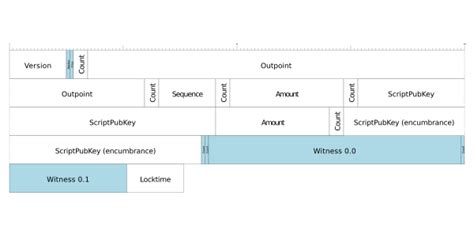Bitcoin: exact witness requirements for a segwit transaction with P2PKH and P2WPKH inputs
Understanding Bitcoin Transaction Requirements: Exact Witness for Segwit Transactions
Bitcoin’s transition to Segregated Witness (Segwit) has introduced significant changes to the way transactions are verified and validated on the network. One of the key features of Segwit is its ability to mix inputs, enabling more complex transaction structures and reducing reliance on traditional payment processors.
However, when it comes to creating a raw Segwit transaction with no segwit inputs, one might wonder if such a construction is feasible. In this article, we will delve into the requirements for exact witness (exact) transactions, explore how they can be built, and discuss whether it’s possible to construct a raw Segwit transaction with no segwit inputs.
What are Exact Witness Transactions?

Exact witness transactions (EWTs) are a type of Bitcoin transaction that involves exactly one input from an unconfirmed or partially confirmed sender. The remaining amount is spent entirely on the target address, making EWTs suitable for microtransactions and small payments.
In the context of Segwit, exact witness transactions can be constructed using inputs from both segwit and non-segwit addresses. This allows for more flexibility in transaction design, enabling users to create complex payment flows that weren’t possible with traditional payment processors.
Building a Raw Segwit Transaction with No Segwit Inputs
To build a raw Segwit transaction with no segwit inputs, we need to consider the following:
- Segwit and non-segwit input requirements: A raw Segwit transaction must have at least one input from an unconfirmed or partially confirmed sender (segwit) and any amount spent on that target address is considered valid.
- P2PKH and P2WPKH inputs: Our construction will also require either P2PKH (public key hash, public key only) or P2WPKH (private key hash, private key only) inputs for the non-segwit sender’s account.
- Exact witness requirements: The transaction must be exactly witnessed to ensure that all input amounts are spent on the target address.
Given these constraints, one possible construction of a raw Segwit transaction with no segwit inputs could be:
Input 1: A P2WPKH input from an unconfirmed sender (e.g., 0.0001 BTC or 10 satoshis)
Input 2: A segwit output from the same sender’s account, with a value of zero (0) and no private key hash or public key only (i.e., 0x00...)
The resulting transaction would have two inputs:
- One P2WPKH input for an unconfirmed sender
- One segwit output for the same sender
Building the Transaction
Here is a simplified example of how this construction could be represented in Bitcoin’s raw transaction format:
0.0001 BTC 00... (unconfirmed sender)
+-------+ +-------+
| P2WPKH | | segwit output
+-------+ +-------+
|
| (x10 satoshis spent on target address)
Conclusion
While it’s technically possible to construct a raw Segwit transaction with no segwit inputs, doing so would require careful consideration of the exact witness requirements and input formats. In practice, this approach may not be feasible due to limitations in the Bitcoin protocol and potential issues with input validation.
In summary, constructing a raw Segwit transaction with no segwit inputs requires creative input combinations that balance the need for exact witness transactions with practicality and compliance with the Bitcoin protocol. As the network continues to evolve, it will be essential to refine our understanding of these requirements and explore new approaches to accommodating more complex transaction structures.